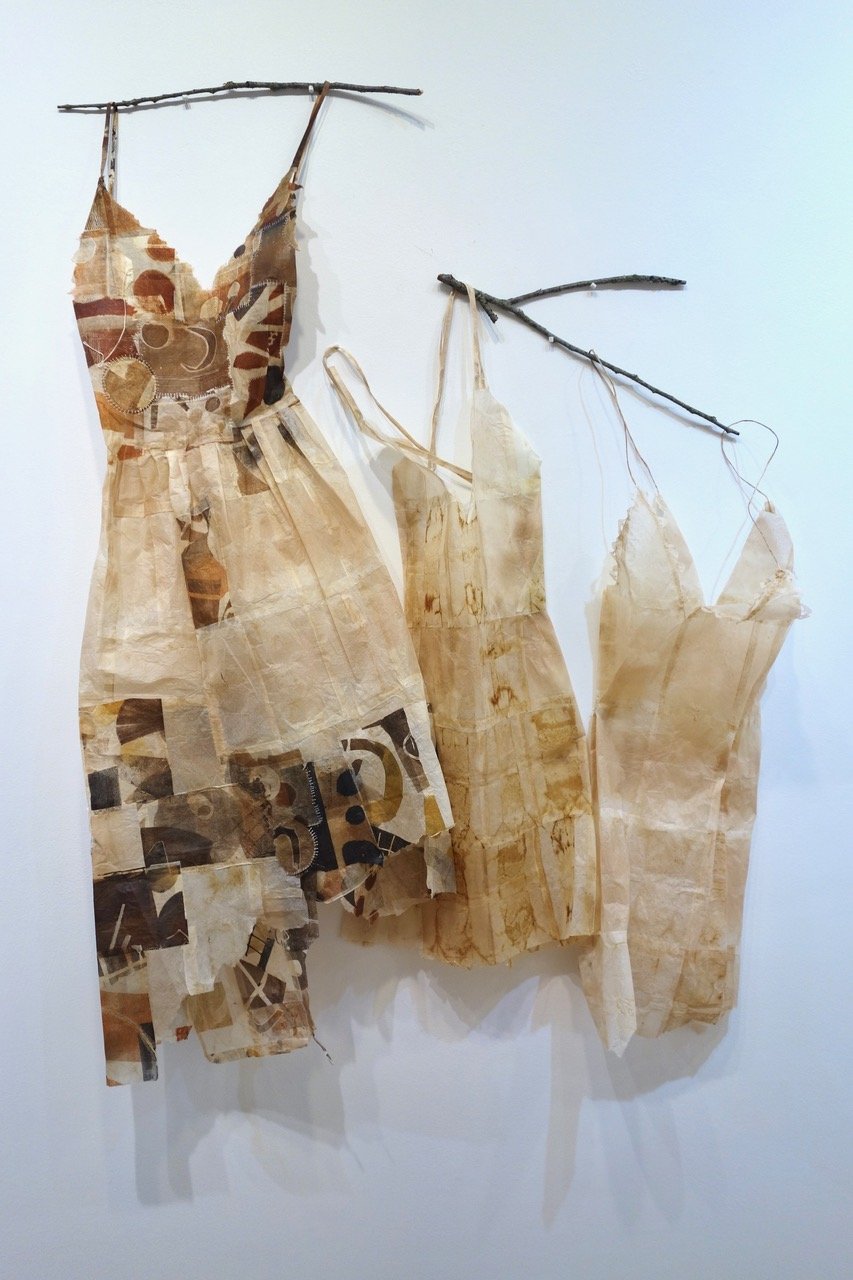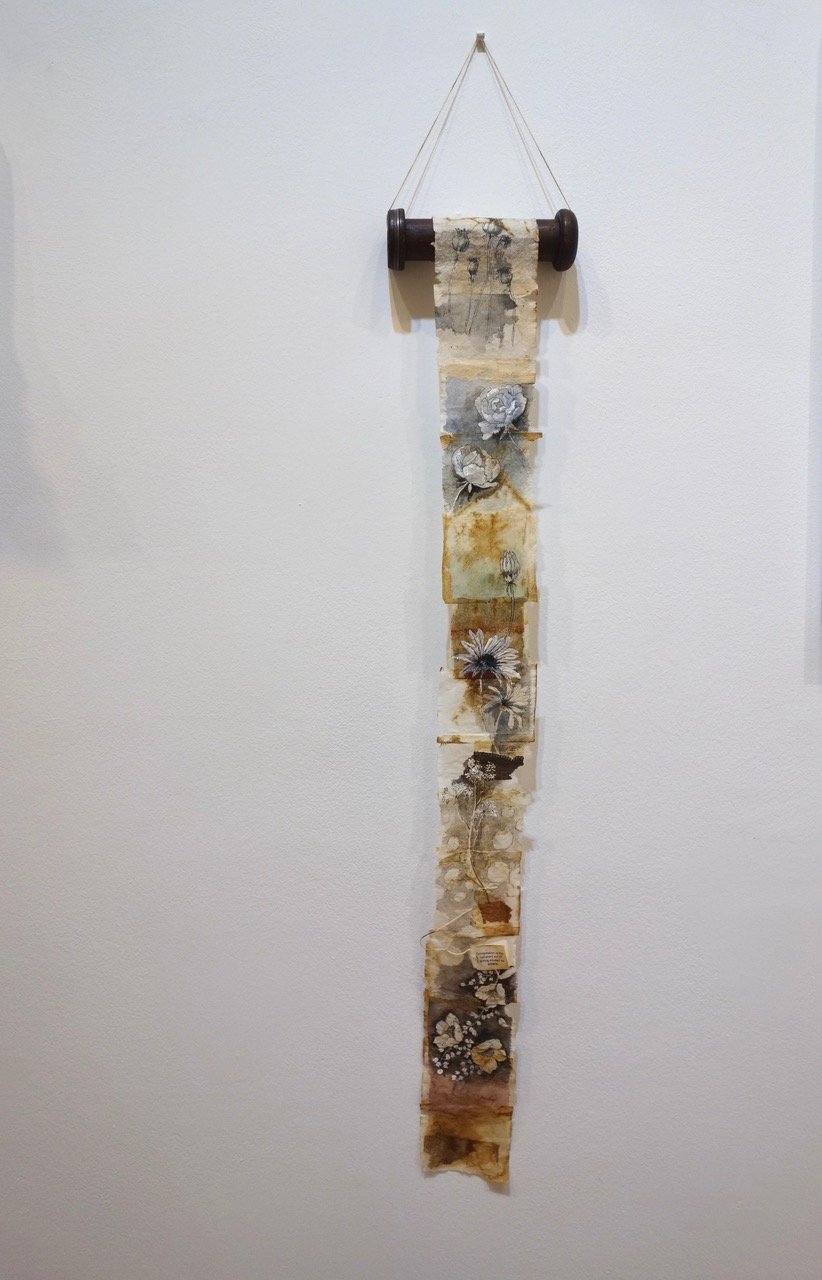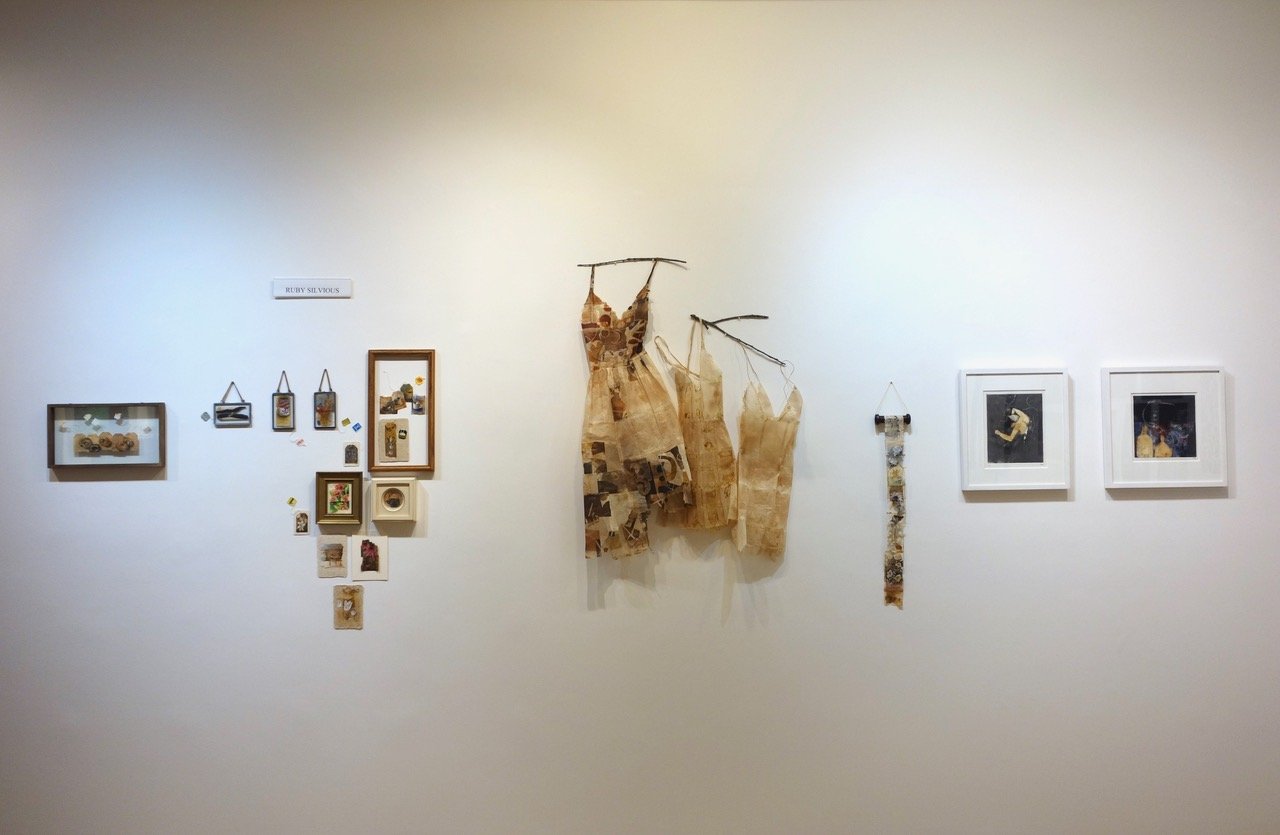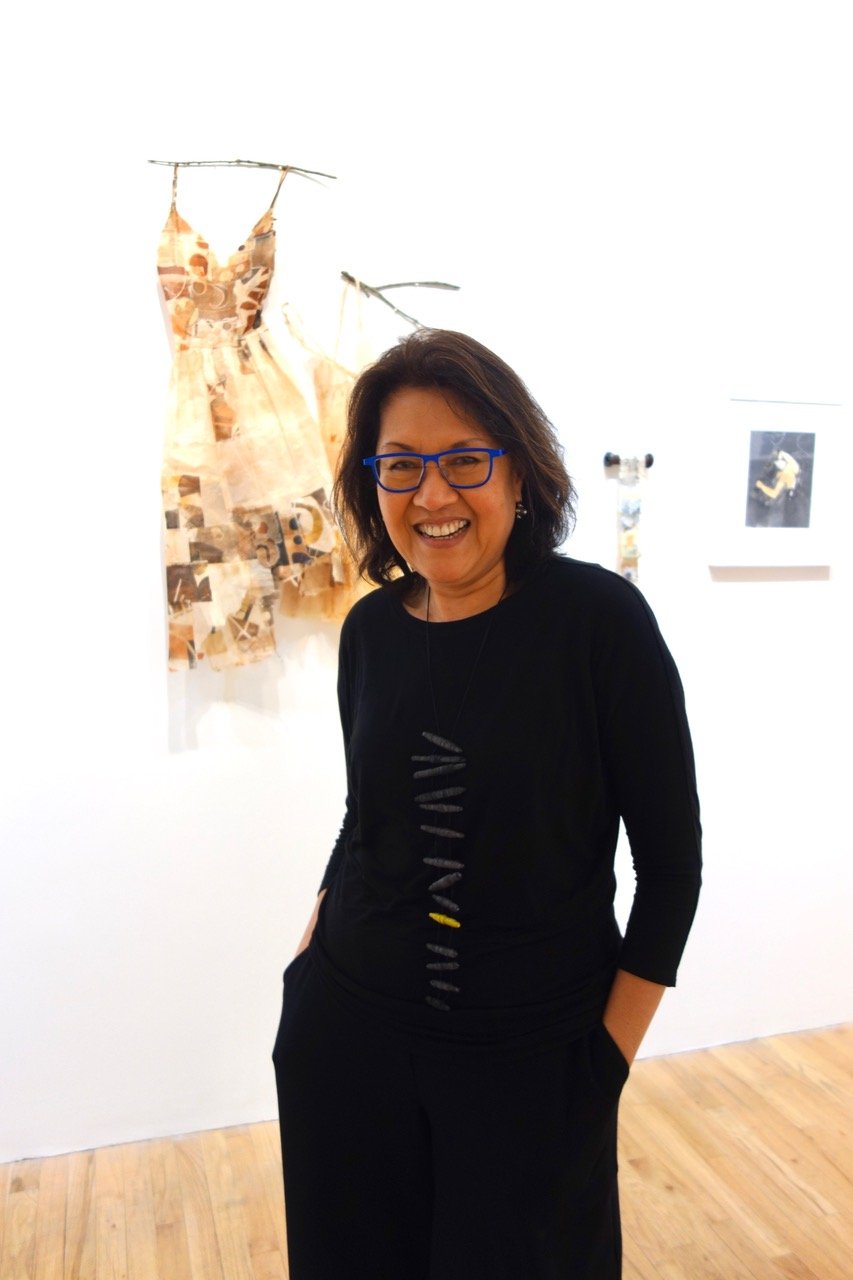The Tea Bag Artistry of Ruby Silvious
/Ruby Silvious fashioned these slip dresses by gluing together used tea bags. (Photo by Claire Mercado-Obias)
A small wooden spool with a strip of printed ribbon unraveling from it.
Ruby Silvious cleverly uses a wooden spool to display what seems to be printed ribbon. Up close, they are used tea bags hand-painted with flowers. (Photo by Claire Mercado-Obias)
Framed miniature paintings of everyday things: pastries, flowers, teacups.
Ruby Silvious repurposes used tea bags as a canvas for her miniature paintings. (Photo by Claire Mercado-Obias)
They stand out on the white walls of the art gallery, but when you look up close, that is where the a-ha moment lies. All these pieces are made from spent tea bags — dried, emptied, ironed — the tea that once inhabited the bag lending a sepia tone to the paper. They are glued together to make a bigger canvas, then embellished with watercolor and found paper. It's a showcase of what tea bags can become, and the genius behind it is Ruby Silvious.
A selection Ruby Silvious' tea bag art shown at the Ceres Gallery, New York City, last December 2022. (Photo by Claire Mercado-Obias)
"My sister Rita, who’s also an artist, and I were thinking about new ideas while we were having tea. We were looking at the tea bags. I loved the different stains that it left, depending on the kind of tea you’re drinking. I was so intrigued by that. I thought I’d pursue it because it’s such a small medium and so manageable. Talk about instant gratification! You could finish something instantly,” Ruby explains. "When I started, the designs were really simple. Simple geometrical lines, color, blocks, and all that. But when I got some practice and experience on the tea bags, I thought I could do this, too. The thing with it is you can mess it up and you have plenty more tea bags. That is how it started and evolved,” she continues.
In January 2015, she began “363 Days of Tea,” a series using tea bags as tiny canvases for her mixed media paintings. She documented her creations on Instagram (@ruby_silvious) where she now has 36.9K followers. Comments like, “So clever and beautifully executed as always” or “I agree the entire world needs to see your artwork. Your talents shine regardless of the medium you chose,” leave both artist and viewer inspired. For how can it not? Ruby invites us to look at ready-to-discard tea bags in a whole new light. Not soon after, more people took notice including publications like CNN Travel, The Guardian, and The Irish Independent. It has also led to commission work and two books, 363 Days of Tea: A Visual Journal on Used Tea Bags and Reclaimed Canvas: Reimagining the Familiar.
Yearly art residencies abroad have given her dedicated time to make more tea bag art: “Find a country you want, and you are given the time and space to create with materials you want; you are inspired by the place.” Each residency culminates with an exhibit. In 2016, Ruby’s show was titled “26 Days of Tea in Japan”, followed by “26 Days of Tea in France” in 2017, and “9 Days of Tea in Spain” in 2018.
To make this body of work, she receives tea bag donations from friends on top of the ones she collects daily. "Because it went viral, some of the tea companies also discovered me and started sending some samples, and this is how I would learn about tea bag construction — some are square, some are rectangular, some are round, some you cannot paint on. It was all just by experience,” Ruby says.
Ruby was born and raised in Tacloban City, in the Visayas region of the Philippines. She moved to New York City when she was 20 years old, and now lives in Coxsackie, New York where she has a workspace in the attic of their home. "When this [tea bag art] went viral, my husband was inspired to make me a studio,” she says. She spends a lot of time here, beginning each morning with creative intention and the question, “What am I gonna do today?”
Ruby Silvious is a Tacloban City-born, New York-based visual artist and graphic designer who makes art out of used tea bags. Her work has been displayed all over the world. (Photo by Claire Mercado-Obias)
She has dabbled in art over the years, taking lessons and experimenting with various media. Now that she has retired from her corporate job, she is able to focus on art full-time. Creativity runs in the blood. Her father, Rodolfo Modesto, was a calligrapher. “He used to do the diplomas in school,” she remembers fondly. “My maternal grandmother, Felicidad Modesto, was a great seamstress in our town. She got the commission from school to sew the uniforms and neckties. She would even do the entire bridal party for weddings. I remember at an early age that I was enthralled by sequins, and I wished I could help sew them on,” she recalls. “When I look back, I liked doing little things. I loved stationery. I loved drawing small flowers and signing my name with just Ruby,” she adds.
To date, she has not stopped incorporating tea bags in her handiwork. Her biggest piece is a kimono that is 6 feet long by 6 feet high, which she will exhibit at the Tee Museum in Norden, Germany on March 4 to April 23, 2023. Her future exhibits in the U.S. include one in Ashville, North Carolina (Pink Dog Creative Gallery, April 7 to May 7, 2023) and another in West Ashokan, New York (Olive Free Library, September 23 to November 4, 2023). She also teaches workshops (details on rubysilvious.com) for anyone wanting to try making art on non-traditional materials.
"I have totally lucked out with all of these opportunities,” she humbly admits. Not bad for someone who initially wasn’t even a tea drinker. But now she has found an appreciation for tea, "I belong to a tea club that samples all kinds of teas every month. It’s been fun discovering,” she says.
Undoubtedly, tea has changed Ruby Silvious’ life.
Claire Mercado-Obias is a writer, food stylist and pastry chef based in New Jersey.
More articles from Claire Mercado-Obias








